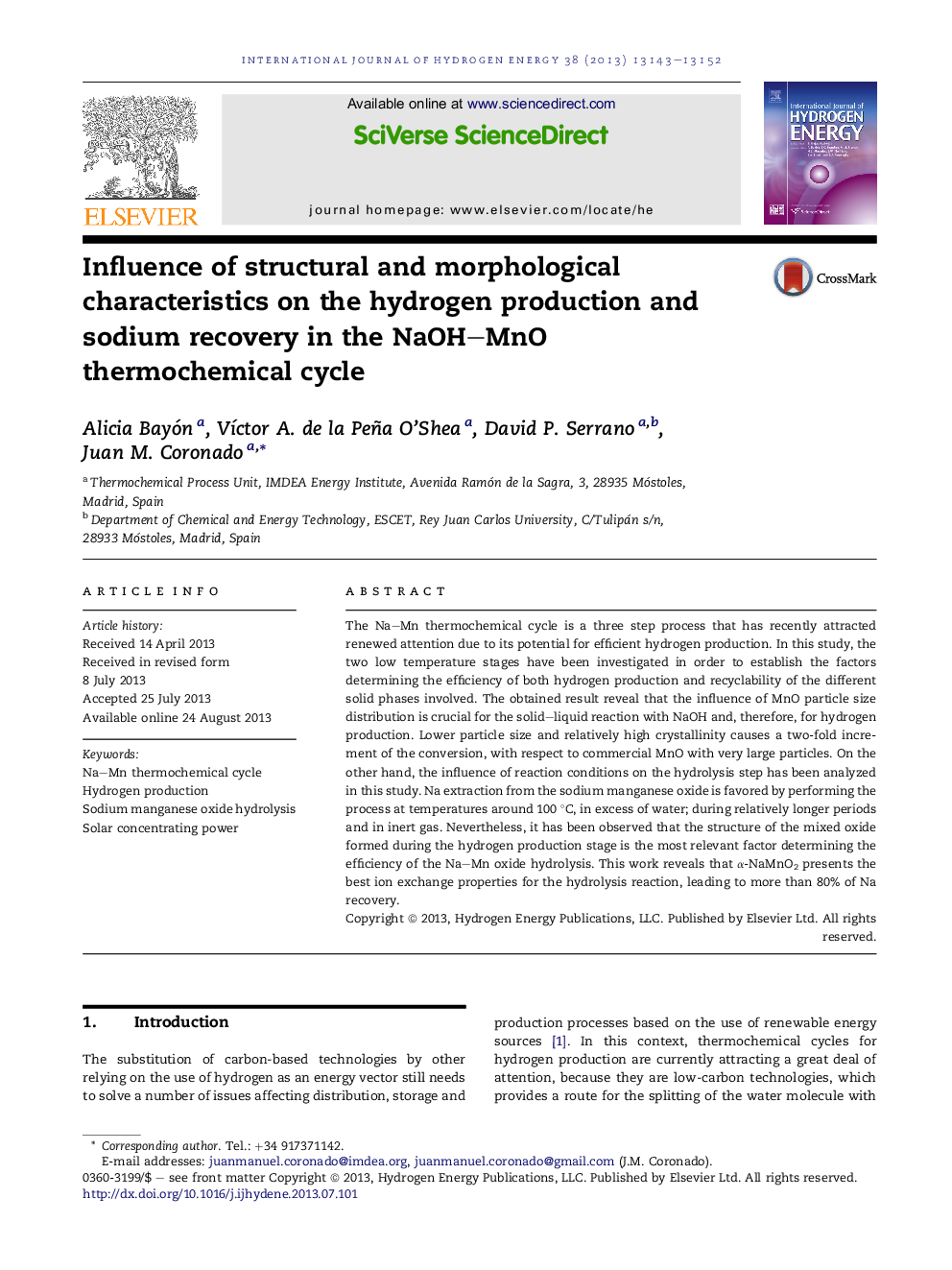| Article ID | Journal | Published Year | Pages | File Type |
|---|---|---|---|---|
| 1273319 | International Journal of Hydrogen Energy | 2013 | 10 Pages |
•Smaller particle size and relatively larger crystal domains favor hydrogen production in the MnO–NaOH reaction.•Crystal structure of sodium manganates is the most relevant factor to achieve a high Na exchange.•Unrecovered Na in the hydrolysis reaction partly evaporates, in the reduction stage, at temperatures above 900 °C.
The Na–Mn thermochemical cycle is a three step process that has recently attracted renewed attention due to its potential for efficient hydrogen production. In this study, the two low temperature stages have been investigated in order to establish the factors determining the efficiency of both hydrogen production and recyclability of the different solid phases involved. The obtained result reveal that the influence of MnO particle size distribution is crucial for the solid–liquid reaction with NaOH and, therefore, for hydrogen production. Lower particle size and relatively high crystallinity causes a two-fold increment of the conversion, with respect to commercial MnO with very large particles. On the other hand, the influence of reaction conditions on the hydrolysis step has been analyzed in this study. Na extraction from the sodium manganese oxide is favored by performing the process at temperatures around 100 °C, in excess of water; during relatively longer periods and in inert gas. Nevertheless, it has been observed that the structure of the mixed oxide formed during the hydrogen production stage is the most relevant factor determining the efficiency of the Na–Mn oxide hydrolysis. This work reveals that α-NaMnO2 presents the best ion exchange properties for the hydrolysis reaction, leading to more than 80% of Na recovery.
Graphical abstractFigure optionsDownload full-size imageDownload as PowerPoint slide
